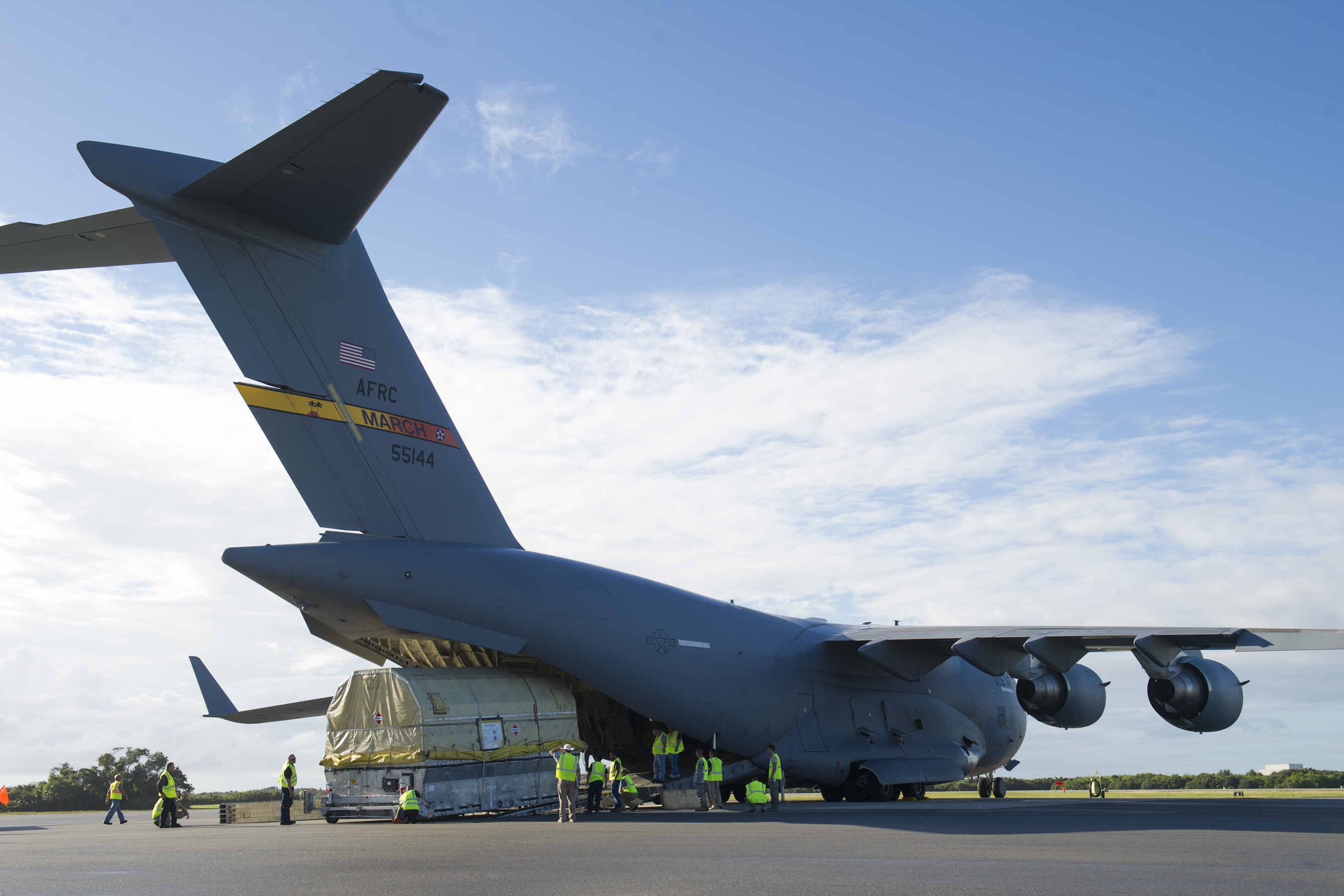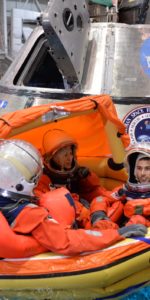
The final U.S. Air Force Global Positioning System (GPS) Block 2F satellite in a fleet of 12 has been delivered to Cape Canaveral Air Force Station in Florida for final processing and preparation for launch. The GPS IIF-12 satellite was flown from Boeing’s Satellite Development Center in El Segundo, Calif., on Oct. 8 aboard an Air Force C-17 Globemaster III aircraft.
The 3,600-pound satellite (launch weight) will undergo a series of checks and rehearsals, including functional checkout, compatibility testing, battery installation, fueling, and mating to a payload adapter before being hoisted 200 feet atop a United Launch Alliance (ULA) Atlas-V 401 booster for launch NET (No Earlier Than) February 2016.
“This GPS IIF-12 satellite represents the end of a legacy as it will be the last of the 61 GPS satellites processed here at (Cape Canaveral Air Force Station),” said Brig. Gen. Wayne Monteith, 45th Space Wing commander. “This culminates an incredible 27-year legacy at our Area 59 Satellite Processing Facility. We are the nation’s premier gateway to space and are humbled to be a part of the team that provides GPS and its capabilities to the world.”

The Air Force Airmen-led processing team at Area 59 has been behind every GPS launch since the first GPS IIF flew from Florida in May 2010. GPS IIF-10 launched on July 15, and GPS IIF-11 is scheduled to launch in less than three weeks. It will be hoisted vertical and secured atop its Atlas-V rocket in the coming days at Space Launch Complex-41 (SLC-41), while GPS IIF-12 processes nearby for launch early next year.
“Our combined team’s objective is 100 percent mission success each and every time,” said Col. Eric Krystkowiak, the 45th Launch Group commander. “My Airmen work, in partnership, with Boeing and the system program office at the Space and Missile Systems Center throughout the final stages of satellite processing prior to launch. From spacecraft containerization, shipment from California, the arrival at the Cape Canaveral Air Force Station Landing Strip, final checkouts, fueling and encapsulation, the team is laser focused on identifying and mitigating any issues that could potentially jeopardize mission success.”
“Mission assurance at the launch base is executed with our ‘triad’ of professionals,” Krystkowiak added. “Our mission assurance technicians are enlisted personnel with many years of experience in missile maintenance who are fully engaged and observe the contractor’s work with the satellite. They bring their hands-on experience, strict technical compliance and discipline to the satellite processing realm. Beside them are our company grade officers and civilian engineers who bring their engineering rigor and innovative ideas into the process. Lastly are our Aerospace Corporation partners who provide invaluable experience and legacy system insight to the team with their continuity of satellite processing. Many of these members have been here at the Cape since GPS first launched in 1989 and achieved full operational capability in 1995.”
The 3,600-pound Block 2F GPS satellites serve as an interim network to keep the Navstar system fully operational until the next-generation (and long-delayed) GPS Block III-A constellation comes online, which won’t be until at least 2017. Eight GPS III satellites are being developed by Lockheed Martin under a $1.4 billion contract with the Air Force, and each will have a 15-year design life (more than 25 percent longer than the newest Block IIF satellites), provide three times the accuracy, eight times the anti-jam capability, and possess a much stronger signal power than the previous satellites. The GPS III-A network may eventually comprise as many as 32 satellites, but for now the Air Force has only formally contracted for four.
GPS plays a very important role in almost every aspect of society now. Major communications networks, banking systems, financial markets, and power grids depend on GPS. It is embedded in virtually every component of U.S. military operations on land, at sea, and in the air, and civilian industry across economies around the world depend on GPS for highly accurate information on time, location, and speed.
Be sure to “Like” AmericaSpace on Facebook and follow us on Twitter: @AmericaSpace
.
Missions » GPS » Missions » GPS » GPS IIF-11 »




